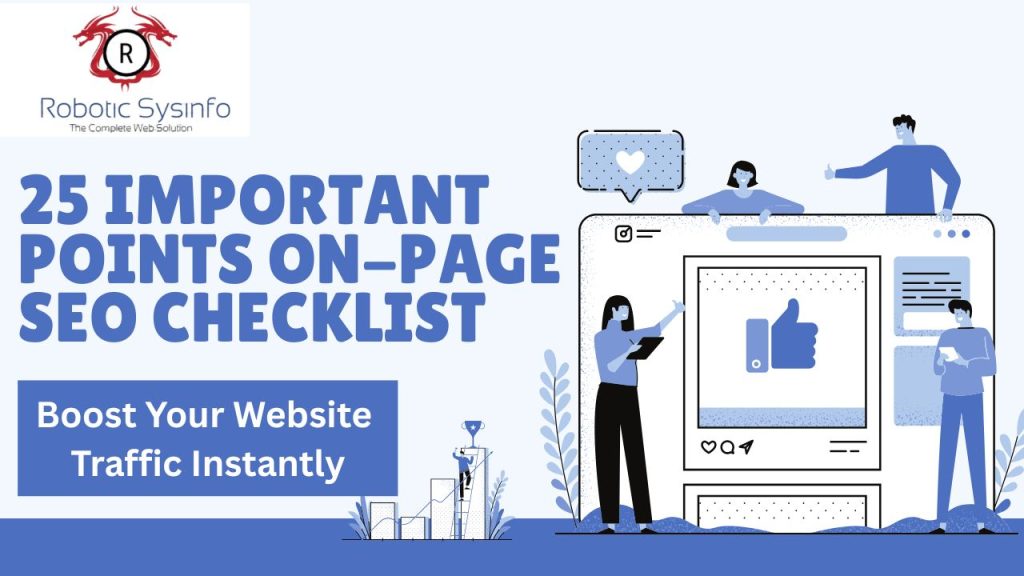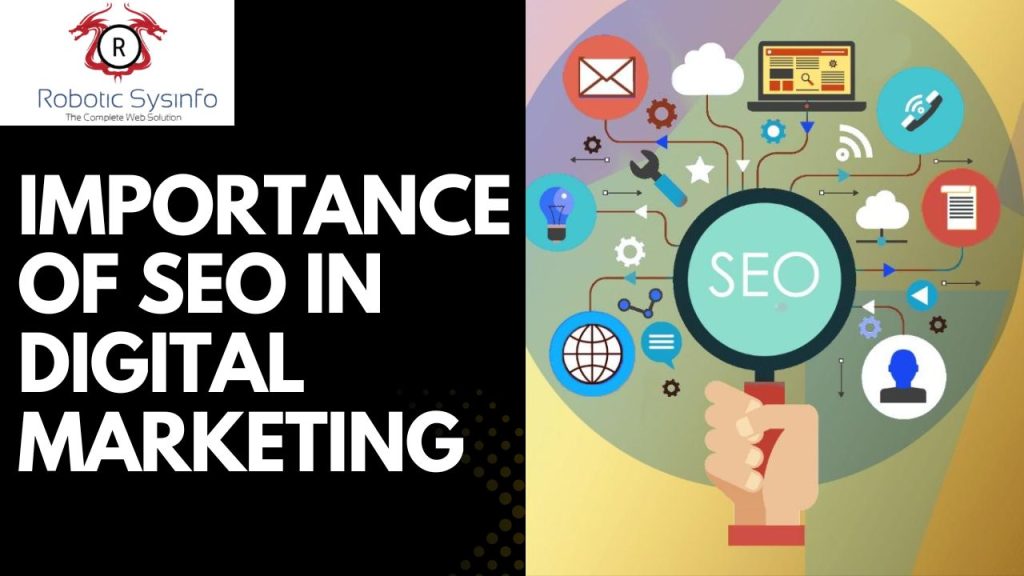
402
What is Front End Web Development in 2025? Languages, Tools, Skills, Frameworks, Trends & Career Growth Guide
Front end web development is among the most valuable skills of our modern era. The front end is all you see when you press keys on your computer, tablet, or smartphone to go to a website: words, pictures, colors, buttons, and animations. This is how you first encounter a business or product online.
By 2025, front end web development will only include visually designing websites as one small part. With fast loading speeds, cross-platform compatibility, and simplicity, the focus is on building websites that are high-performance, mobile-first, and accessible. Users will leave a website if it appears old-fashioned, is slow to load, or is hard to use, as businesses now understand. The frontend developer is therefore more vital than ever before.
What is Front End Web Development?
Front end web development meaning is how to build the visual and interactive aspects of a website or web application—the parts that visually users can see and directly interact with from within their browsers. The buttons, links, images, animations, and other things are all between the bottom contact form and top navigation bar.
Like a home, a house. The front, windows, exterior, and interior furniture are all things that visitors will use. The electric, plumbing, and foundation are all in the back; these are all necessary for the house to function, but none can be seen. The front is where the initial wow factor occurs, even though both are necessary.
Front-end development plays a critical role in the development of web-based apps, ensuring that the user interface is both responsive and visually appealing. By combining HTML, CSS, and JavaScript, developers can create seamless experiences for users across devices.
Frontend developers work closely with the designers, who have the look and feel of the website, and the backend developers, who have the infrastructure behind the storage and processing of the data. Together, they develop a site that is both good to look at and good to use.
The Business Benefits of a Strong Front End Web Development
The website is typically the first point of interaction between would-be clients and the company. Even though a bad front end would potentially scare away would-be clients automatically, a good front end has the potential to make a good first impression within seconds. Hiring experts to handle front end web development may provide companies with the following quantifiable advantages:
Better First Impression – Statistically, people make judgements regarding a site in 0.05 seconds. The user front end of a site will stand a better chance of holding people’s attention if it is structured, current, and visually appealing.
Better Conversions: The clean and simple design increases the likelihood that people will take the intended action, such as purchasing something, subscribing to a newsletter, or filling out a contact form.
SEO benefits: Google’s ranking algorithm currently considers elements such as page speed, user experience, and mobile-friendliness. All of these are improved immediately by having a good front end.
Regular Branding: The website’s front end is designed correctly, easily identifiable, and consistent with the brand’s color, voice, and tone.
Keeping Users Clients: will be much more likely to return to a site that is simple to use, loads quickly, and performs on all devices.
Keeping in compliance with accessibility— Ensuring individuals with disabilities are able to use screen readers, keyboard navigation alone, and other ways of accessing the front end—is not just best practice, but it also prevents legal problems in most places.
Why Front End Web Development Matters in 2025
Most of the early internet websites were very plain, text-only, and similar. Today, when users log in, they expect much of exciting and engaging content. Customers will switch to a competitor instantly if a website is slow, clunky, or outdated. The importance of front end web development has grown as a consequence. The year 2025 will be important for the above reason.
Since mobile phones produce more than 65% of all internet traffic, frontend developers in a mobile-first scenario must make sure that pages function and are presented properly on these phones.
Inclusivity is the industry standard for accessibility (A11y). Pages should be available to everybody, regardless of their visual, auditory, or physical handicaps.
SEO success: Businesses can increase their number of customers through search results without any additional spending on advertising.
Increased customer engagement: Customers will be more inclined to purchase a product or subscribe to a service if they can find what they seek.
Modern front-end coding practices assist in securing against attacks such as cross-site scripting (XSS) that compromise user trust and security.
Types of Web Applications
Front end web development can be utilized by a tremendous number of websites and web applications, and every one has its own specific use. Companies are able to act best if they have knowledge regarding the different types.
A website is referred to as static if its material is plain and doesn’t alter. Since they are quick to load, they are best utilized in landing pages or minimal portfolios.
a picture of a website demonstrating an artist’s portfolio.
Dynamic Websites – The information is revised or changed as a result of database changes or input from users. Consider a news website that provides live updates of the news.
Single Page Application: Gmail and Trello are just two examples of this type of application, a Single Page Application (SPA), which will preload all content in advance and update specific sections dynamically without the need for refresh.
Progressive Web Apps (PWAs) are offline-accessible web pages that are app-like native and can send push notifications. Twitter Lite is the perfect example.
A commercial platform is an e-commerce web page with product listings, shopping baskets, and secure payment systems. Amazon and Flipkart are examples of commercial platforms.
Web portals are key sites for specific users, employee or student dashboards for instance, school intranets.
Enterprise Applications: Applications that work to manage large companies that have a tendency to have complex dashboards as well as user roles. A good example is Salesforce.
Front End vs. Back End Development – Detailed Comparison
Similar to a coin with two faces—the front end and the back end—a website may be thought of in this way. Although they are both necessary, they serve very different functions:
| Aspect | Front End | Back End |
| Purpose | Creates the visual look and feel, and handles user interactions. | Manages the server, database, and application logic. |
| Main Focus | Layouts, colors, navigation, animations, forms. | Data storage, security, payment processing, user authentication. |
| Languages | HTML, CSS, JavaScript, TypeScript. | Python, PHP, Java, Node.js, Ruby. |
| Frameworks | React, Vue, Angular, Tailwind CSS, Bootstrap. | Django, Laravel, Spring Boot, Express.js. |
| Examples | Clicking a “Buy Now” button, filling out a contact form, viewing an image gallery. | Processing the payment, saving user data to a database, retrieving product details. |
| Goal | Make the website attractive and easy to use. | Make sure the website functions correctly and handles data securely. |
While front-end deals with the visible part of a website, the backend powers the server-side logic. Choosing the best language for backend development can greatly influence performance, scalability, and security of your web applications.
The Front End Web Development Languages With Examples
Front end web developers employ different programming languages to develop the visual and interactive aspects of the front end of a website.
1. HyperText Markup Language (HTML)
All the pages on the web are constructed from HTML. The structure, like headlines, paragraphs, images, and links, is defined. Without HTML, the browser would not know what to display.
Example:
<h1>Welcome to My Blog</h1>
<p>This is where I share my latest articles.</p>
2. Cascading Style Sheets (CSS)
CSS is used to assign the appearance of HTML elements. It dictates the layout, font, color, spacing, and even animation. Without CSS, every page would be plain old black text on a white background.
Example:
css
body {
background-color: #f0f0f0;
font-family: Arial, sans-serif;
}
The color of the background is f0f0f0.
The sans-serif font family Arial is being used.
3. JavaScript
JavaScript makes websites interactive. You may see something happen with a click of a button without reloading the page.
Example:
javascript
document.querySelector(“#alertButton”).addEventListener(“click”, () => {
alert(“Button Clicked!”);
});
The alert button was chosen from the document with document. querySelecto(alertButton), and an event listener to the click event was added to it.
Warning says, “Button Clicked!”
You register for the class in July 2025.
4. TypeScript
TypeScript is the term for the enhanced JavaScript. Due to its checks and standards, whereby coders are able to identify flaws prior to implementation, it is used for gargantuan projects.
Beginners can strengthen their skills by working on web development projects such as personal blogs, e-commerce product pages, and portfolio websites. These projects not only improve technical ability but also help build confidence in working with real clients.
2025’s Most Popular Front End Web Developemt Frameworks and Libraries
By offering pre-canned code for common operations, libraries and frameworks accelerate the process.
React. js Facebook created a JavaScript library that makes it easier to build intricate user interfaces using reusable pieces. Netflix, Shopify, and Instagram are some of those using it.
Because of the simplicity so well understood and its versatility, Vue. js is ideal for developers of every skill level. It will work for large-scale and small-scale projects.
Google created Angular, a fullstack framework, which has everything you might need to develop massive apps right out of the box.
Utilityfirst CSS framework Tailwind CSS speeds up styling by leveraging pre-built courses such as textred500 or p4.
Bootstrap 5, the oldest and most popular of these frameworks, already has pre-existing components to build responsive, speedy sites.
By building code into vanilla JavaScript during build time, Svelte is a relatively new framework that builds leaner, speedier apps.
Front End Web Developemt Tools 2025
A front end web developer requires some equipment to perform their work, just like a carpenter requires measuring equipment, hammers, and saws. The most used tools for 2025 are:
Microsoft’s Visual Studio Code (VS Code) is an awesome, totally free code editor. It’s developers’ favorite because it has support for many languages, it has a debugger, and it has thousands of extensions, like Prettier (to auto-format code) and Live Server (to see a live preview of your website).
GitHub and Git: Git is a versioning system which helps to make it simpler for developers to have multiple different versions of their program. Public presentations to future employers, collaboration between programmers, and hosting code on the internet are only a few of the things that GitHub is used for.
npm/yarn These package managers allow for installation and maintenance of libraries or frameworks. Instead of writing every function by hand, developers can use solid, precompiled packages from these places.
Some small files and assets are utilized in modern frontend development. To speed up website loading time, build tools like Vite, Webpack, and Parcel bundle and optimize such resources and files.
Testing libraries (Jest, Cypress) – These libraries are used by the developers to test a site’s functionality before release. Bugs are therefore minimized and stability improved.
UI/UX teams normally provide frontend developers the designs via design collaboration tools (Figma, Adobe XD). With Figma, the developers are able to learn the same layout, colors, and fonts of the designs and carefully analyze them to conclude that the final website is an accurate copy of the initial idea.
DevTools and Firefox Developer Tools Web browsers also have devtools for the browser that are advantageous for the developer because they grant them the tools they need to test the speed of their browser, identify bugs in their code, and experiment with layouts. Two web browsers that facilitate these are Chrome DevTools and Firefox Developer Tools.
The Enhanced Modern Front End Workflow
The frontend developer workflow of 2025 is designed to foster cooperation, productivity, and greatness. This is the natural course of events:
The UI/UX design team begins by building prototypes in Adobe XD or Figma. The developer subsequently walks through the design layout after being provided with the required material (icons, images, font).
Breaking It Down – Instead of all the code in a single file, the developers divide the site into chunks that can be used repeatedly, and they are called components. Navigation bar, product cards, and footer are just some examples of the things that are items that can be called different components.
Semantic HTML tags like,, and are first used to define the website structure in an effort to make it SEO optimized and accessible. HTML structure is such that:
Styling frameworks or CSS: Once the structure is set, developers utilize plain CSS or frameworks like Tailwind or Bootstrap to set styles. Developers ensure the design is responsive, i.e., based on desktop, tablet, and mobile screens, the design changes accordingly.
Using JavaScript, interactivity can be incorporated into the site by adding features like animations, dropdown menus, form validation, and dynamic content.
API Integration: If live data must be displayed, such as weather, stock prices, or product catalogs, the website is integrated with an API (Application Programming Interface) to be able to retrieve data and display it.
The website is tested on multiple browsers and devices for compatibility. Responsiveness, usability features, and loading speed are also checked.
Optimization includes activities like image compression, code minimization, and unused file removal to help with the improvement of efficiency.
.Deployment – The finished site is deployed to a web-hosting platform like Netlify, Vercel, or AWS so it’s live and accessible to users globally.
The Latest Web Development Trends (2025)
There are going to be some awesome things happening in the ever-evolving world of frontend development in 2025:
Now coders are able to get code completion and code snippets to reveal their work more efficiently by as much as 40% through applications such as GitHub Copilot, Tabnine, and ChatGPT. This is enabled by AIAssisted Coding.
React Server With this, some portions of the site can be prefetched server-side instead of in the browser, and the page loads are faster and SEO results better.
In general, use dark mode. Most newer sites include a toggle that will switch the user between light and dark mode, enabling them to choose one that is easier on the eyes.
Microfrontends: Instead of a single big monolithic front end, companies split a big project into several small isolated chunks that are coded independently. Due to this, it is easier to maintain and easier to change.
WebAssembly: Enables the browser to run code in languages such as C++ or Rust at nearly native speeds. Ideal for gaming, video production, and other resource-heavy use cases.
Progressive Web Apps (PWAs) bring the web’s reach together with native app advantages. PWAs can be run offline, send push messages, and show up on mobile home screens.
How to Become a Front End Web Developer in 2025
As of 2025, the process of how to become a front end developer is described in greater detail.
Since learning frontend development is learning a new language, learning frontend development starts with simple concepts and progresses towards complex and sophisticated concepts. It is a convenient, step-by-step reference:
- Learn the basics: Learn HTML, CSS, and JavaScript basics. Create simple things, such as a personal website or landing page.
- Learn more about responsive design, such as how to implement CSS media queries in order to achieve desktop, tablet, and mobile screen appropriate layouts.
- Pick a CSS framework, and begin with Bootstrap or Tailwind CSS to kick your design into high speed.
- React will be the trendiest JavaScript framework in 2025, although Angular and Vue are trending too.
- Working with APIs: Learn how to fetch and render live data with fetch() or Axios.
- GitHub & Git Version Control Learn how to manage changes, branch, and collaborate on your projects.
- Code on real projects that you can display in your portfolio, like dashboards, e-commerce websites, and blogs.
- Audit and optimize your site for performance by learning Web Performance Optimization using tools like Lighthouse.
- Be careful with accessibility; follow the WCAG (Web Content Accessibility Guidelines) so that all people can access your site.
- Create a portfolio site featuring your strongest work, contact information, and resume.
Front End Web Development Career and Salary
There remains a significant increasing demand for front end web developers as businesses need sites which are quick, visually attractive, and intuitive if they’re to succeed online.
In India, the fresh graduates are paid between ₹4. 5 to ₹8 LPA, the mid-level developers between ₹10 to ₹15 LPA, and the senior developers with experience of five years or more can get ₹20 LPA or more.
The salary for freshers in the United States is $65,000 per year, though seniors can earn between $120,000 or more.
Freelance Front-end developers are independent workers who pay customers between $20 and $100 per hour of work. That is attractive for those who want to be rich and independent.
Remote Work – Multinationals can hire talented developers anywhere, allowing them to work on behalf of customers in the United States or Europe from India, the Philippines, or Eastern Europe.
A well-designed portfolio can set you apart in the job market. Reviewing web developer portfolio examples can give you ideas on layout, design elements, and the kind of projects you should showcase to impress recruiters.
Common Mistakes Made by Beginners
These risks may face even the most passionate beginners:
- Frameworks: It is confusing to learn the basics of JavaScript first before going out to learn React.
- Beginners have been known to code for desktops only, overlooking mobile design and failing to understand that most customers are reaching the site using mobile phones.
- Too much animation—too much animation will make customers go crazy and make the site slower.
- It is easy to miss changes or overwrite code by mistake without version control. Git must be learned.
- Cutting code without even knowing what it does – So, actual learning is hindered and debugging is made more difficult.
Best Resources to Learn Front End Web Development in 2025
FreeCodeCamp is an open-to-use project-based learning platform.
The official doc is published on the MDN Web Docs website.
Practical problems. Front End Mentor:
Kevin Powell, Fireship, are a few of the YouTube channels.
Udemy and Scrimba are a few paid courses.
Final Thoughts
By being aware of what is trendy right now, being versatile, and utilizing the proper materials, you are able to make sites that are not only pretty but also efficient. This is why front end web development is a skill that it is ideal to possess with limitless opportunities in 2025. You can work with a firm or you may start freelancing if you desire to enter this profession.
If you are looking for affordable web development services, give Robotic Sysinfo a try.
Frequently Asked Questions regarding Front End Web Development
In a couple of months, can you learn the front end?
You can learn the fundamentals in two months if you work daily. But job preparedness can take six to twelve months.
In what language do you write the web interface?
The fundamental ones are HTML, CSS, and JavaScript. You also use frameworks such as React, Vue, or Angular.
Is frontend web development simple?
To be great at the backend, one must be proficient at coding, designing, and problem-solving but can start relatively simply.
What is CSS?
Cascading Style Sheets (CSS) are applied to create the visual appearance of a web site, ranging from color and design to type and animation.
What does HTML stand for?
HyperText Markup Language (HTML), which defines web site content and structure, is the building block utilized to build web sites.
What is a full stack developer?
A full stack developer does all the steps of a website or application, including the front end (UI) and the back end (database, server).









